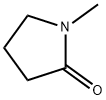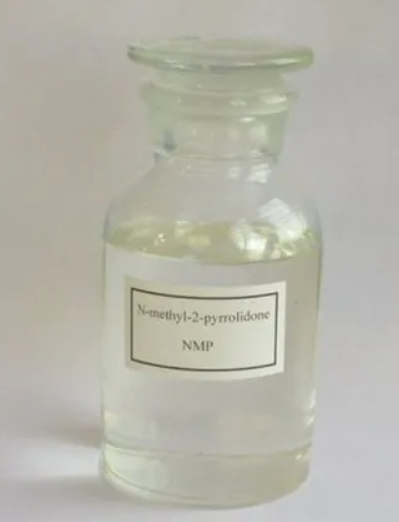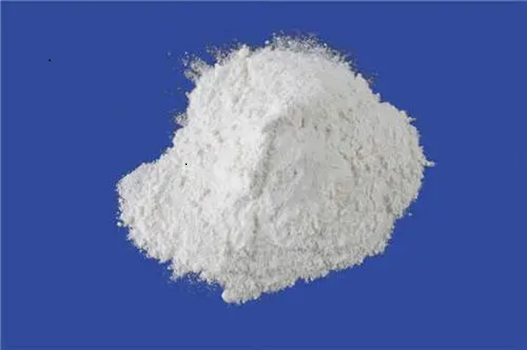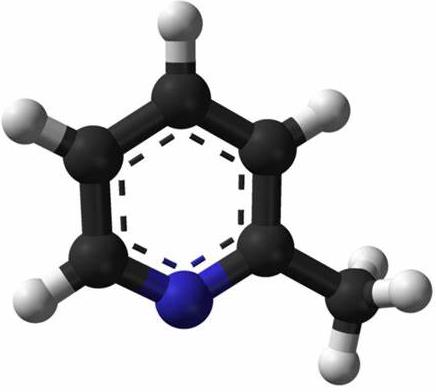What is N-methyl-2-pyrrolidone used for?
Overview
N-methylpyrrolidone (NMP) is a polar aprotic solvent. It has the advantages of high boiling point, strong polarity, low viscosity, strong solubility, non-corrosion, low toxicity, good chemical and thermal stability, etc. It is mainly used It is used in the fields of aromatic extraction, purification and separation of acetylene, olefins, and diolefins, polymer solvents and polymerization solvents. With the rapid development of domestic polyamide, polyimide, polyphenylene sulfide and other high-strength engineering plastics and high-strength fibers, the quality and demand of N-methylpyrrolidone have been put forward higher requirements.
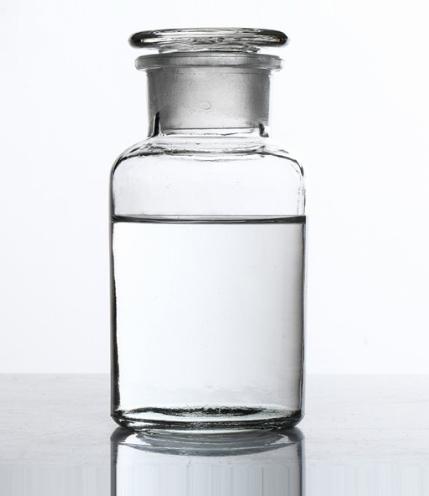
At present, there are three main industrial production processes for N-methylpyrrolidone: a) γ-butyrolactone (GBL) and monomethylamine (MMA) are reacted to synthesize N-methylpyrrolidone; b) γ-butyrolactone and mixed amines Synthesis of N-methylpyrrolidone by reaction; c) 1,4-Butanediol dehydrogenation-amination to prepare N-methylpyrrolidone. The production capacity of foreign N-methylpyrrolidone is mainly concentrated in the hands of a few large companies. There are more than 10 domestic enterprises engaged in the production of N-methylpyrrolidone, but the scale of the equipment is relatively small, the source of raw materials is many, and the product quality stability is poor , The production technology needs to be improved. At present, the domestic apparent N-methylpyrrolidone annual output is 53 kt/a, and it is growing at an annual rate of 6% to 8%. The prospect of NMP is relatively broad.
Physical and chemical properties
NMP (C5H9NO, molecular weight 99, boiling point 203°C) has a pH=7~9. It is weakly alkaline with a slight ammonia smell. It is a colorless to light yellow transparent oily liquid belonging to nitrogen heterocyclic compounds. It has good chemical stability. It is relatively stable in a neutral environment. Due to the pyrrole ring in its molecular structure, NMP is prone to hydrolysis in an alkaline environment. NMP can be oxidized by hydroxyl in the water phase to generate 66 products, of which 24 can be identified. NMP undergoes a hydrolysis reaction in an acidic environment with water to generate 4-methylaminobutyric acid, which is further decomposed into succinic acid semiamide.
And it has high thermal stability. In the absence of water and air, the decomposition temperature is about 350°C. Although the color of NMP turns yellow at 200°C, it does not affect its use. When NMP encounters air and water during use, it is prone to decomposition reaction. In the presence of oxygen and water at the same time, NMP can undergo hydrolysis and oxidation reactions at a low temperature of about 120-200°C.
Application
1. Extractant
Because NMP is a solvent with very strong dissolving power, it is widely used as an extractant. It can be used to recover natural gas and light naphtha cracking. The generated gas contains acetylene, which can increase the purity of acetylene to 99.7%; it can be used to recover naphtha. The butadiene and butadiene contained in the C4 fraction of ethylene by-product produced by high-temperature pyrolysis of oil; the isoprene contained in the C5 fraction has a purity of 99%; it is also used for recovery from the benzene fraction of cracked gas oil, petroleum or coal tar Aromatics, the recovery rate is about 96% to 99.6%.
2. Absorption gas purification of exhaust gas
The PVC tail gas contains a considerable amount of vinyl chloride, which will cause environmental pollution and waste resources. NMP can be used to absorb the vinyl chloride in the PVC tail gas, and the effect is very good. NMP can also be used to adsorb acid gases such as CO2 and H2S in synthesis gas and natural gas to purify the gas and achieve the purpose of refining.
3. Lubricating oil refining
In the process of petroleum refining, lubricating oil contains aromatic hydrocarbons in vacuum fractionation at 370~550 ℃, which affects the viscosity index of lubricating oil. Traditionally, phenol and furfural are used as raw materials to extract aromatic hydrocarbons. Since NMP has the advantages of stronger solubility and higher selectivity than phenol and furfural, it can replace phenol and furfural for lubricating oil refining.
The refining experiment of Daqing distillate lubricating oil was carried out with NMP, phenol and furfural. The results show that the solubility and selectivity of NMP are better than those of phenol and furfural; the yield is about 5% higher than that of phenol, which is equivalent to furfural; the solvent ratio is 9% lower than that of phenol and 14% lower than furfural; NMP refined oil also has better performance. Antioxidant. Using NMP as the solvent, the Lanzhou Refining and Chemical General Plant's reduced-line distillate oil and Iran's reduced-line third-line undewaxed lubricating oil distillate were refined, and the refining process conditions were optimized. Using NMP to refine lubricating oil has safe operation, low loss, good product performance, and good application prospects.
4. Polymer and polymerization solvent
NMP can be used as a resin processing solvent to manufacture vinyl coatings, floor paints, varnishes and composite coatings. NMP can also be used as a solvent for polymerization reactions, such as the synthesis of polyphenylene sulfide and polyimide using NMP as a solvent. Polyphenylene sulfide (PPS) is a new type of polymer engineering plastic, which has excellent heat resistance, flame retardancy, insulation, high strength and hardness, good dimensional stability of the product, and can be used in a variety of moldings. The method is used for processing, and it can be precisely formed, and it has a wide range of uses.
Under the action of catalyst NaCO3, p-dichlorobenzene (P-DCB) and dehydrated sodium sulfide were reacted in NMP solvent at about 230 ℃ under normal pressure for 8 h to synthesize polyphenylene sulfide. Polyimide is a kind of polymer with imide ring as its characteristic structure. This type of polymer has outstanding heat resistance, excellent mechanical properties, electrical properties and stable performance. Its various products such as films, adhesives, coatings, laminates and molding compounds have been widely used in many fields such as aerospace, electronics and electrical engineering, automobiles, and precision instruments. After benzene carboxylic dianhydride and diamine are reacted to produce polyamide compounds, the polyimide can be obtained by cyclization reaction in NMP solvent under the reaction conditions below 50 ℃.
5. Medium temperature heat pipe working fluid
At present, there are very few working fluids for the heat pipes in the middle temperature section. The thermal conductivity um-A used now is toxic and easily decomposes at high temperatures; the heat transfer coefficient of naphthalene condensation is too low. Therefore, inquiring about a non-toxic, chemically stable and good heat transfer performance of the middle-temperature heat pipe working fluid is of great significance for the recovery of exhaust heat at 400-600 ℃, which is widespread in the industry. The heat transfer characteristics of a two-phase closed thermosyphon using NMP as the working fluid have been experimentally studied. The results show that the comprehensive heat transfer performance of NMP is better than naphthalene, and in the working temperature range of 220~350 ℃, its corresponding working pressure Only 0.3 ~ 2.5 MPa, is a suitable medium temperature heat pipe working fluid.
6. Synthetic charge transfer compound
The development of laser science puts forward higher requirements for nonlinear optical materials, and the synthesis of new nonlinear optical materials has become the focus of attention. A series of charge transfer compounds were synthesized from NMP and H3PMo xW12-xO40·n H2O, and their nonlinear optical properties were characterized. The results show that there is a strong interaction between anions and cations in the solids of this series of compounds. The compound undergoes intramolecular charge transfer under light, resulting in cation oxidation and anion reduction. Anion reduction is in the single-electron stage; with the increase in the number of tungsten substitutions in the compound molecule , The compound frequency doubling effect is enhanced, and the third-order nonlinear coefficient is increased. It is expected to become a new type of nonlinear optical material.
7. Other
NMP can be used as a cleaning agent for ultrasonic cleaning of precision machinery and optical instruments. It can also be used in the production of fine chemicals such as lithium-ion battery manufacturing, pharmaceuticals, pesticides, dyes, and coatings.
You may like
Related articles And Qustion
Lastest Price from N-Methyl-2-pyrrolidone manufacturers

US $5.00-3.00/kg2025-07-10
- CAS:
- 872-50-4
- Min. Order:
- 1000kg
- Purity:
- ≥99.90%
- Supply Ability:
- 100 tons
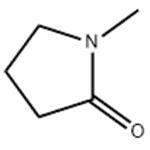
US $1.50/g2025-06-25
- CAS:
- 872-50-4
- Min. Order:
- 1g
- Purity:
- 99.0% Min
- Supply Ability:
- 10 Tons
